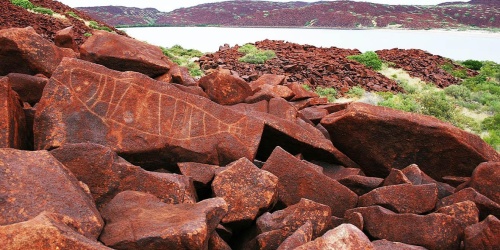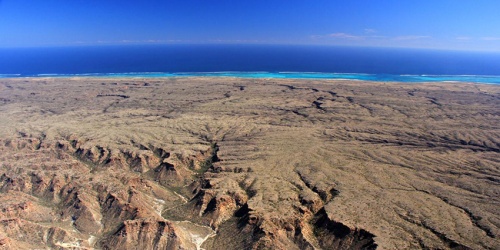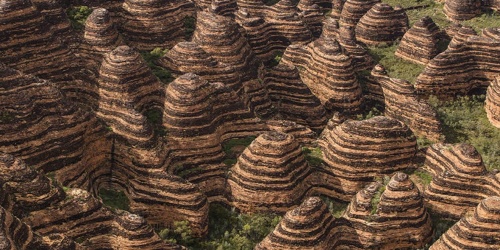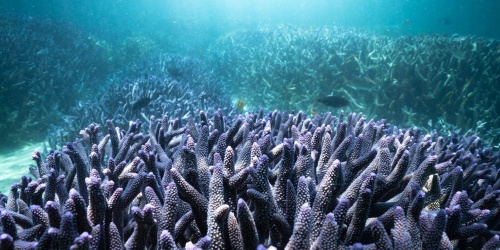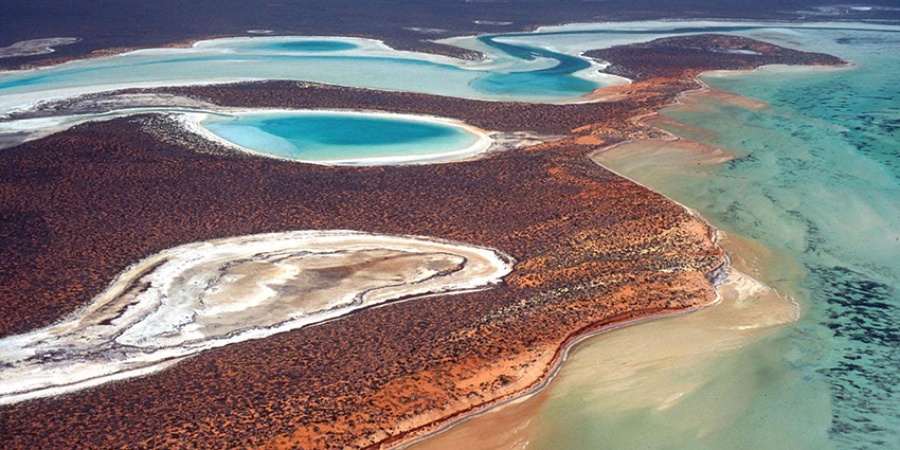
Aerial view of Shark Bay Photo by DBCA
Shark Bay is a truly remarkable place, with colourful and diverse landscapes, rare fauna and flora, and world-class examples of Earth’s ecological processes. It is best known for its dugong population, vast sea-grass beds, and the most diverse and abundant examples of living marine stromatolites, or ‘living fossils’, in the world.
The Shark Bay World Heritage Area covers 2.2 million hectares and has a coastline stretching for 1500 kilometres. About 65 per cent is marine waters. It is located 800km north of Perth on Australia’s most westerly point.
The Shark Bay World Heritage Area was inscribed on the World Heritage list on 13 December 1991 for all four of the natural Outstanding Universal Value criteria.
These criteria are represented by the outstanding natural features of the Shark Bay area:
- unique, rare and superlative natural phenomena and formations of exceptional natural beauty
- ecosystems representing evolutionary history
- wildlife refuges
These include:
- Hamelin Pool, the only place in the world with a range of stromatolite forms comparable to the fossil record
- Wooramel Seagrass Bank, the largest seagrass meadow in the world with the highest species diversity assembled in one place
- Shark Bay’s seagrass banks, which produce around 8 million tonnes of leaf material each year and provide shelter and food for a diversity of animals including prawns, turtles and more than 10,000 dugongs
- a diversity of landscapes – peninsulas, islands and bays
- exceptional coastal scenery at Zuytdorp Cliffs, Dirk Hartog Island, Peron Peninsula, Heirisson and Bellefin Prongs, and wide sweeping shell beaches at L’haridon Bight
- great natural beauty
- strongly contrasting colours
- an abundance of marine fauna – dugongs, dolphins, sharks, rays, turtles and fish
- important and significant natural habitats where species of endangered plants and animals still survive for conservation, with wild populations of five of Australia’s 26 endangered mammals still occurring on Bernier and Dorre Islands (four of which occur nowhere else in the wild) and with vulnerable and endangered mammal populations being reintroduced on Salutation and Dirk Hartog islands
- a meeting point of climates – tropical, desert and temperate climes, which means that animals and plants adapted to all three of these climatic zones can be found in Shark Bay
- outstanding examples of biological processes
At the time of Listing, Shark Bay was Australia’s tenth and WA’s only World Heritage Property and was one of just 11 places globally to satisfy all four of the natural criteria for World Heritage listing (there are now 21). Shark Bay is now one of 19 Australian World Heritage sites and one of the four in Australia (and the only one in WA) which meets all four natural criteria.
More information
- Shark Bay visitor information
- sharkbay.org
- UNESCO World Heritage listing for Shark Bay
- Download a map of the Shark Bay World Heritage Area below.
Shark Bay World Heritage Advisory Committee
Each World Heritage area is overseen by a State Cabinet-appointed advisory committee. These committees provide advice to managing agencies and State and Australian Government ministers to assist in protecting the Outstanding Universal Value of each area.
Find out more about the Shark Bay World Heritage Advisory Committee.

